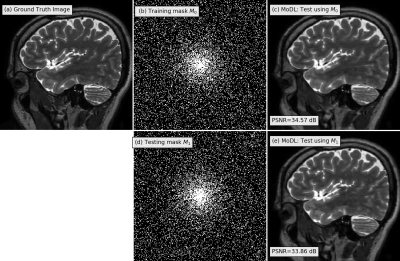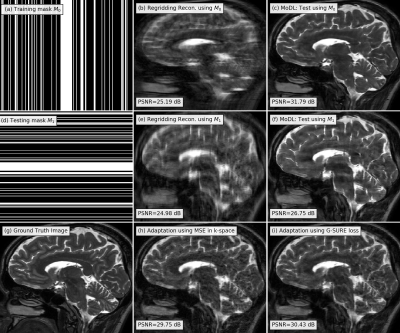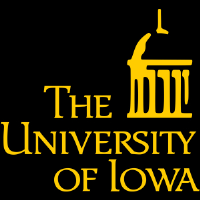Hemant Kumar Aggarwal1 and Mathews Jacob1
1University of Iowa, Iowa City, IA, United States
1University of Iowa, Iowa City, IA, United States
We introduce a novel approach to adapt deep learned reconstruction algorithms to a new forward model. The proposed scheme relies on G-SURE loss metric, which accounts for the noise in the measurements. By minimizing the risk of overfitting, this scheme offers improved reconstructions.

Fig. 1: These are the experiments in 2D settings at 6-fold acceleration with a noise of standard deviation of 0.02. Here, we trained the MoDL only with mask $$$M_0$$$ as shown in (b). During testing, we utilized the same mask $$$M_0$$$ as well as a different mask $$$M_1$$$ (d). The reconstruction results in (c) and (e) show that MoDL architecture is robust to small changes in the sampling mask.

Fig. 2: (a) The Cartesian mask $$$M_0$$$ used during training. (b) The regridding reconstruction of the test image using $$$M_0$$$. (c) MoDL results in good reconstruction since $$$M_0$$$ is used here during testing. (d) This is a different mask $$$M_1$$$ to test the robustness of MoDL architecture. (e) is the corresponding regridding reconstruction. The reconstruction (f) has lower PSNR than (c), as expected since $$$M_1$$$ was not used during training. (h) is the result of model adaptation on (f) using MSE (i) is the reconstructed image using the G-SURE-based model adaption.
